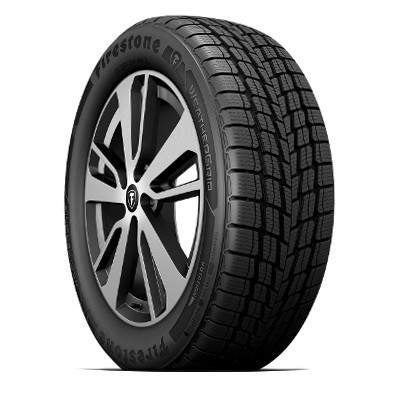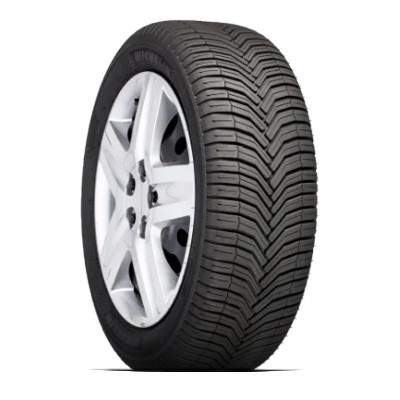Firestone WeatherGrip vs. Michelin CrossClimate
Winter is coming. The time when almost all drivers ask themselves this one question: should I invest in winter tires or take a risk with all-season tires?
The type of tire you should buy depends on the weather type and road conditions you face. But, let me tell you, tire technology has improved.
Today, you’ll find all the good features of a winter tire in all-season tires, with an added benefit: you won’t have to change your tire every time weather conditions change.
Since there are a lot of brands selling all-weather tires, you’re bound to get overwhelmed if you go out without some preparation and know-how.
Let’s accept it: every all-weather tire isn’t exceptionally good at providing a comfortable drive in the winter. To help you make a better decision, we have pinned two of the best all-weather tires against each other – the WeatherGrip and the Michelin CrossClimate.

Firestone WeatherGrip
Since the 1900s, the Firestone Tire Company has been making some of the world’s best tires. Its new addition, the Firestone WeatherGrip, is the first all-weather tire designed for coupes, sedans, CUVs, minivans, and crossovers.
Let’s take a closer look at some of its specs:
Product Information
The Firestone WeatherGrip is a remarkable all-season tire, with all the good features that car enthusiasts look into when buying tire: comfortable drive, impressive grip, good treadlife, and on-point handling.
The WeatherGrip has an excellent in-depth tread design and compound that not only helps you maintain the grip on snow and wet surface, but also provides improved durability and better wear.
As far as traction control and hydroplaning resistance is concerned, the WeatherGrip has impressive directional pattern circumferential grooves and deep lateral grooves that ensure water, slush, and snow drain out completely from the tire’s contact patch.
Moreover, thanks to Firestone’s snow traction claw technology on center and intermediate ribs and interlocked grooves with zigzag sipes, you can maintain perfect traction even on slippery and snowy roads.
On the inside of the tire, you’ll find two steel belts reinforced by a polyester cord and nylon, which makes sure you get a comfortable driving experience.
Lastly, these tires are three-peak mountain snowflake (3PMSF) certified, which means you won’t have to worry about driving under harsh weather conditions.
Pros
- Impressive short braking distance
- Flexible and better steering control
- Amazing traction on light snowfall
- High resistance to aquaplaning
- 3PMSF certified
Cons
- Not the perfect choice with heavy snowfall
Buy Now on Tire Rack
Michelin CrossClimate
Michelin is the second-largest manufacturer of tires after Bridgestone, producing some of the world’s top-selling tires. Its latest edition, the Michelin CrossClimate, is an all-weather tire that can mount on sedans, station wagons, crossovers, and coupes.

Let’s dig in to explore more features:
Product Information
You have often heard that all-season tires aren’t meant for knee-deep snow, which is true for most tires, but not for Michelin’s CrossClimate: the first all-weather tire with the best of both worlds.
The tire is stamped with the three-peak mountain snowflake (3PMSF) symbol, which means it won’t disappoint you in harsh weather.
The tire has an excellent directional tread pattern and unlike most traditional summer tires, it has a two layer tread design: one is on the treads and the other is underneath the surface.
The design makes sure the heat doesn’t remain on the contact patches only and is dispersed across the tire. This combination of a unique tread pattern helps you maintain uniformity in your driving in all types of weather conditions.
Moreover, its featured rubber compound is second to none. It is enriched with an increased level of Silica – a common compound for winter tires – which leads to low rolling resistance so you can save fuel, and don’t have to compromise on the winter performance of your vehicle.
The most unique thing about these tires is its 3D sipes, which are located on the tread, and can mold their shapes to road conditions. With these sipes, you can drive freely without having any issue of low grip on wet, snowy, and muddy roads.
Furthermore, you can’t ignore the braking distance these tires offer, which we have to admit is the best we have come across lately.
Pros
- Way better than average all-weather tires
- Impressive performance on dry and wet surfaces
- Amazing short braking distance
- Low treadwear
- Better steering control
Cons
- Though they are good winter tires, they fall short from original winter-specific tires
Buy Now On Tire Rack
Difference Between The Two
The Michelin CrossClimate and WeatherGrip are two amazing all-season tires that you can choose for your car. We have listed some of the differences these two tires have so that you can easily decide which one to go for.
First, let’s jump to the prices of these tires straight away. The Michelin CrossClimate is sold at a price range of $141 to $275, it all depends on the type and variant you’re going for. For WeatherGrip, you can expect to get charged somewhere around $101.99 to $188.99.
Secondly, you can also see a difference in their tire sizes. For example, the Michelin CrossClimate offers more tire size choices i.e. from 14 to 20 inches, whereas, the WeatherGrip only provides between 14 to 19 inches.
Third, both these all-weather tires offer an amazing treadlife warranty that you can’t miss. The Michelin CrossClimate provides a warranty of 55 923 miles, while, on the other hand, the WeatherGrip gains a slight edge here by offering some 65,000 miles.
Comparison
| Specs | WeatherGrip | CrossClimate |
| Diameter | 24.2” | 25” |
| Width | 7.9” | 7,9” |
| Rim Range | 5.5-7” | 5.5-7” |
| Load Range | SL | XL |
| Weight | 18 lbs. | 17 lbs. |
| Max Load | 1235 lbs. | 1521 lbs. |
| Revs/mile | 859 | 832 |
What We Like/What We Didn’t
- Both tires offer impressive treadlife warranty
- The CrossClimate is a little expensive
- With similar features, the WeatherGrip offers a low price
- We loved the remarkable traction both tires have on light snow
- Though both are good all-season tires, but not ideal winter tires
- CrossClimate comes in diverse tire size ranges
Conclusion
The WeatherGrip and the Michelin CrossClimate are excellent all-season tires with almost all the features winter tires offer. Choose either between the two and you’ll not be disappointed.
For us, however, the Firestone WeatherGrip is the winner, as it offers increased traction, hydroplaning resistance, and controlled handling in slippery surfaces at a lower price point.

Have a 2013 Chevy Captiva front wheel drive. I need snow tires for 6-8″ while going up a very streep hill. My sister lives in Lead, in the Black Hills of SD. I need good grips. What do you recommend?
Michelin CrossClimate2. They’re a little more expensive than most tries, but you will be sure that you will likely never get stuck in the snow.
Agree, just put them on a Chevy Volt last fall. Recently drove to the upper peninsula in Michigan. While there we got 10″ of snow. No issues getting around. The towns of Houghton and Hancock have a lot of hills and we didn’t have problems driving up hills and stopping and starting at intersections. Really good tires